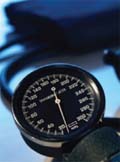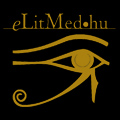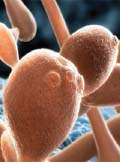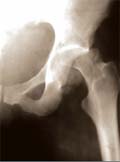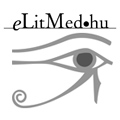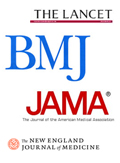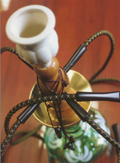The eLitMed.hu medical portal uses computer cookies for convenient operation. Detailed information can be found in the Cookie-policy.
Lege Artis Medicinae - 2011;21(01)
Content
[Hypertension and twenty years of LAM]
[The author reviews significant results related to hypertension with special emphasis on papers published in the LAM during the past twenty years. The history of hypertensiology, important aspects of hypertension research, therapeutic guidelines, antihypertensive agents and their combinations are also discussed. A brief section is dedicated to the expected future development of hypertension research and new directions of antihypertensive therapy.]
[The treatment of bleeding complications associated with anticoagulant therapy]
[The last few years have seen an increasingly widespread use of anticoagulant treatment. Not only is it applied in a wider range of diseases, but the duration of the treatment has also become longer on the basis of recent recommendations. Beside the traditional anticoagulant agents, coumarin and heparin, a new generation of anticoagulants has emerged in the past few years. These can be administered orally in a fixed dose, which will make anticoagulant treatment available for an even wider patient population. However, the more widespread use of anticoagulants will result in the growing occurrence of their most threatening adverse effect, bleeding. We summarize the treatment options for the bleeding complications in connection with the administration of the currently used anticoagulants and the available methods of their reversal.]
[Pain and opportunities for non-pharmacological pain management in intensive neonatological care]
[Neonatal intensive care and therapeutic process is accompanied with a range of painful interventions. Research data from the past decades revealed that repeated and/or prolonged pain has long-term consequences on the neurobiological development of the premature infant, which has led to an increased attention to the measurement and alleviation of pain. In addition to pharmacological pain relief, more and more alternative pain management methods of varying efficacy are appearing in the provision of care for premature infants. In this study, we introduce non-pharmacological pain treatment methods with proven efficiency that can be applied to complement the pharmacological pain management or as a therapy before any painful interventions in intensive neonatological care. These methods include heart sound and music therapy, nutritive and non-nutritive sucking, swaddling, touching and kangaroo care.]
[In vitro activities of micafungin against invasive clinical isolates of Candida species]
[INTRODUCTION - Micafungin is a new member of the antifungal class echinocandin exhibiting a broad-spectrum activity against Candida spp. MATERIAL AND METHODS - In this study, we collected 246 invasive clinical Candida isolates obtained from 4 diverse medical centers between 01.04.2009 and 01.04.2010. In these isolates we determined the minimum inhibitory concentrations (MIC) of micafungin. RESULTS - Among the 246 isolates 156 (62%) were C. albicans, 26 (11%) C. glabrata, 24 (10%) C. parapsilosis, 16 (7%) C. krusei, 14(6%) C. tropicalis and 10 (4%) other, less frequently isolated Candida spp. Micafungin had good in vitro activity against all Candida spp. tested (except C. parapsilosis), MIC90 range 0,016-0,125 mg/L. According to CLSI criteria, all isolates (except C. parapsilosis MIC90 2 mg/L) can be interpreted as susceptible. CONCLUSIONS - In vitro MIC90 values measured in this study were substantially lower than the maximum serum concentrations that can be achieved after administration of micafungin (8 mg/L after a 75-mg dose). This fact and the fungicid effect of micafungin against Candida species make this compound, which is licenced for the treatment of invasive candidiasis, a promising systemic antifungal agent.]
[Autoimmune pancreatitis in Hungary: a national multicenter study]
[BACKGROUND - Autoimmune pancreatitis (AIP) is an increasingly recognised, special form of chronic pancreatitis, which greatly differs from other forms of chronic pancreatitis. Most papers on this condition have been published in Japan. METHODS - In our multicenter study, we aim to present the characteristics (demographics, clinical symptoms, laboratory and morphological findings, extrapancreatic symptoms, response to therapy, remission) of the first 13 Hungarian cases of AIP. RESULTS - The mean age at presentation was 44.2 years (range: 19-74); 54% of patients were women. New-onset mild abdominal pain (77%), weight loss (38%) and jaundice (31%) were the most common symptoms, with ulcerative colitis as the most frequent (38%) extrapancreatic manifestation. Diffuse pancreatic swelling was seen in 7 patients (54%), and a focal mass in 5 (38%). Pancreatic duct strictures were present in all patients. Serum immunoglobulin-G4 level was elevated in 71% of the patients in whom it was measured. All percutaneous core biopsies (4 patients) and surgical specimens (2 patients), and 2 of the 4 biopsies of the papilla of Vater revealed hystological findings typical for AIP: periductal, diffuse lymphoplasmacytic infiltration, marked interstitial fibrosis, and obliterative phlebitis. Immunostaining revealed IgG4-positive plasma cells in 57% of the patients in whom it was examined. Granulocytic epithelial lesions (GEL) were detected in 3 patients. These patients were younger (mean age 34 years), 66% were women and 6% had ulcerative colitis, whereas the mean age of patients without GEL was 65 years, and the majority of them were men. Steroid treatment resulted in remission of the symptoms in all patients. Because of suspicion of pancreatic tumour, 2 patients with focal AIP underwent partial pancreatectomy. Symptoms relapsed in one patient, but an increased dose of steroid resulted in a remission, which was maintained by azathioprine therapy. CONCLUSIONS - In our first Hungarian cases, we have confirmed previously reported characteristics of AIP. AIP with GEL is frequent among our patients; this condition is more frequent among women and younger patients, and is often associated with ulcerative colitis. If AIP is suspected, the performance of percutaneous biopsy is highly recommended. The therapeutic response to steroid therapy was excellent.]
[Osteonercosis of the femoral head during pregnancy]
[Osteonecrosis of the femoral head associated with pregnancy is a rare condition. Approximately 40-50 cases have been reported, the first one by Pfeifer in 1957. Avascular osteonecrosis is usually caused by factors that impair the bone’s blood supply (intraosseous arterious or venous occlusion, venous stasis, hypertension in the bone marrow). Owing to the cautious use of radiological imaging techniques during pregnancy and the limited experience with this condition, the correct diagnosis is usually made only retrospectively. Thus, total hip replacement is required in most cases. In the third trimester, MRI examination is safe to perform, and in some cases a simple X-ray should be also considered, as timely avoidance of weight-bearing and other therapeutic interventions might help to prevent the arthroplasty. Here, we would like to present a case observed and treated by us, and to overview the options that could facilitate making the correct diagnosis and finding the appropriate therapeutic program.]
[Effective adalimumab treatment of a steroid-dependent Crohns’ disease patient suffering from general, abdominal and joint symptoms of multiple etiology]
[The 69-year-old male patient had been suffering from periodically relapsing rheumatological symptoms involving variable localisations (knee, ankle, MTP, sternoclavicular and hip joint) since 1964. On the basis of his joint symptoms, load-independent lower back pain, sacroileitis, recurrent iridocyclitis, urethroprostatitis and oral aphtous lesions, Reiter disease was diagnosed in 2000. The patient had Lyme-disease (confirmed Borrelia burgdorferi seropositivity) with peripheral facial paresis in 2003. The patients joint problems relapsed in 2006, accompanied by diarrhoea and fever, independent of any infecions. The possibility of IBD could not be confirmed either by macroscopic examination using colonoscopy or hystology. The patient was admitted to our department in March 2008 for the first time, presenting again with joint pain and disability of gait, 7-8 bowel movements a day, and fever. Taken together the clinical symptoms, the typical radiological findings and HLA-B27 positivity, Bechterew disease was diagnosed. Colonoscopy performed because of diarrhea revealed multiple segmental aphtoid lesions and irregular ulcers, suggesting Crohn disease that was confirmed by histology (cryptal abscess formation and microgranulomas). Sulfasalazin, 5-ASA, and other NSAIDs applied to treat rheumatological symptoms could not eliminate either the gastrointestinal or the rheumatological symptoms of the patient, which necessitated regular steroid therapy. Because of the patient’s steroid dependency, and considering his rheumatological symptoms, in June 2008 he was treated with adalimumab (ADA) induction therapy (80-40-40 mg s.c.). In two weeks, his gastrointestinal as well as extraintestinal symptoms substantially improved, and completely diminished through the course of maintenance ADA therapy (40mg weekly). The patient is still asymptomatic and is excercising (jogging) regularly.]
1.
Clinical Neuroscience
Is there any difference in mortality rates of atrial fibrillation detected before or after ischemic stroke?2.
Clinical Neuroscience
Factors influencing the level of stigma in Parkinson’s disease in western Turkey3.
Clinical Neuroscience
Neuropathic pain and mood disorders in earthquake survivors with peripheral nerve injuries4.
Journal of Nursing Theory and Practice
[Correlations of Sarcopenia, Frailty, Falls and Social Isolation – A Literature Review in the Light of Swedish Statistics]5.
Clinical Neuroscience
[Comparison of pain intensity measurements among patients with low-back pain]1.
Clinical Neuroscience Proceedings
[A Magyar Stroke Társaság XVIII. Kongresszusa és a Magyar Neuroszonológiai Társaság XV. Konferenciája. Absztraktfüzet]2.
3.
Journal of Nursing Theory and Practice
[A selection of the entries submitted to the literary contest "Honorable mission: the joys and challenges of our profession" ]4.
Journal of Nursing Theory and Practice
[End of Life and Palliative Care of Newborns in the Nursing Context]5.
Journal of Nursing Theory and Practice
[Aspects of Occupational Health Nursing for Incurable Patients ]



